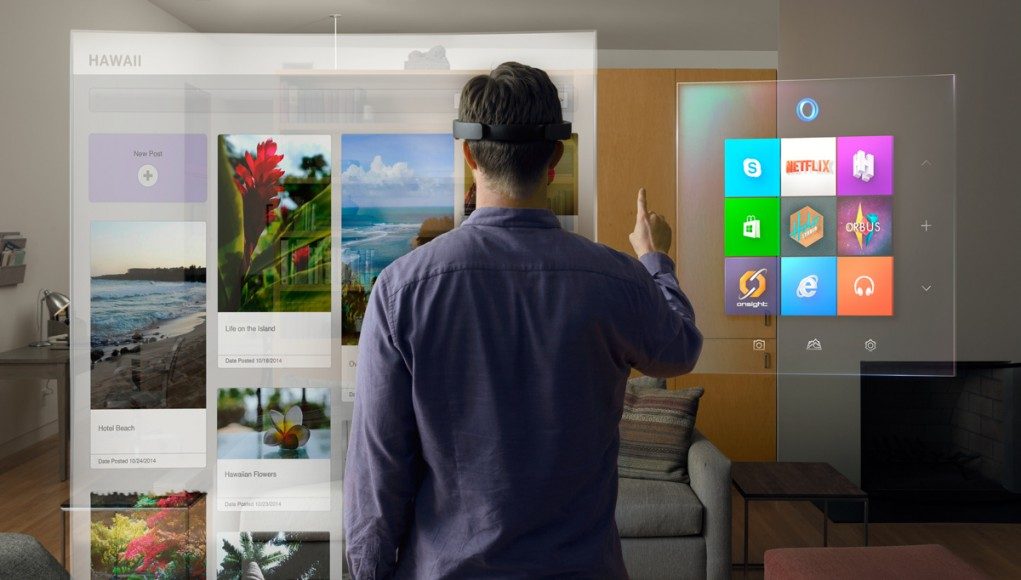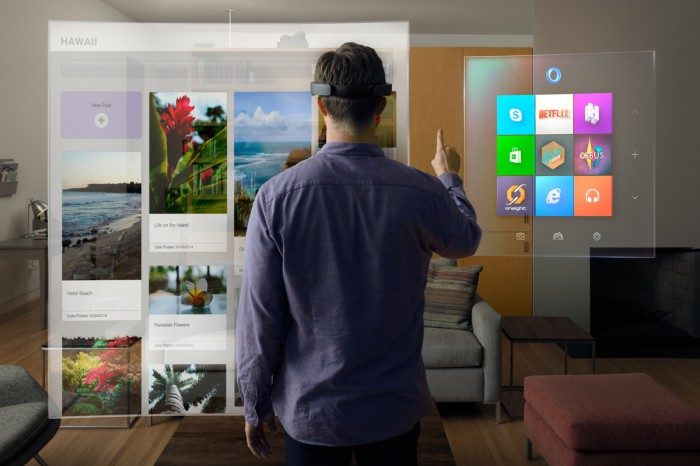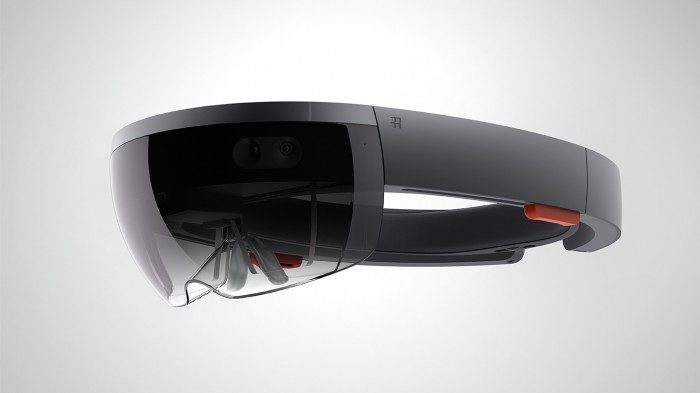Wondering how Microsoft HoloLens development will work? Microsoft says that HoloLens APIs are built into the core of Windows 10 and that all Universal apps—those built for cross-device capability–will be automatically compatible with the HoloLens AR headset.
Although concepts of augmented reality have been around for years, actually thinking about AR from a development standpoint will be new for most developers. Fortunately, Microsoft is going to make it easy to get at least an initial wave of basic apps onto HoloLens. During the device’s announcement, the company said that HoloLens APIs will be part of every copy of Windows 10, and that all Windows Universal apps will automatically extend to HoloLens.
Windows Universal apps, which have been around since Windows 8, are those that are built to extend and operate seamlessly across devices running Windows, from a 23-inch monitor, to an 8-inch tablet, to a 5-inch phone, or even to the Xbox One. As the Windows Dev Center puts it:
Develop once for all Windows devices using a unified Windows runtime and VS tools that allow you to both support experiences unique to a device in XAML, HTML, and DirectX, and share the code that supports those experiences across all devices using C++, C#, or JavaScript. When your work is finished you can you can produce the app packages that you will submit to the Windows Store and Windows Phone Store with a single action to get your app out to customers on any Windows device.
This does require that developers follow a particular (optional) development path, but if they do, it allows for a single package deployment across many devices, including Microsoft HoloLens.
I take it that this will work for basic interactions—like being able to pull up a Netflix video or Spotify player and hang it on your wall like a picture frame—whereas more involved apps—like allowing a game character to jump around your room—will require deeper development. Even so, if Microsoft can convince developers to write Windows Universal apps, having a set of popular baseline apps that you could plaster your room with, even if its just an app window on your wall, would definitely give HoloLens a nice head start. After all, the masses may need a gentle transition to wrap their heads around the possibilities of such a device.
Want to learn more about developing for Microsoft HoloLens? Microsoft says that you can get a leg up on HoloLens development by learning the ropes of Windows 10 and checking out the company’s annual ‘Build‘ dev conference.
The best way to get started [with HoloLens] is to become familiar with Windows 10 by joining the Windows Insider Program. Next, register for Build 2015. At Build, you’ll learn more about how to get started designing and developing for Microsoft HoloLens, receive details on the SDK, and meet members of our engineering team. If you can’t attend in person, plan to tune in via livestream or check out the recorded keynote and session presentations that will be available after the event.
That last part of that quote will be particularly important given that Build is already sold out!









